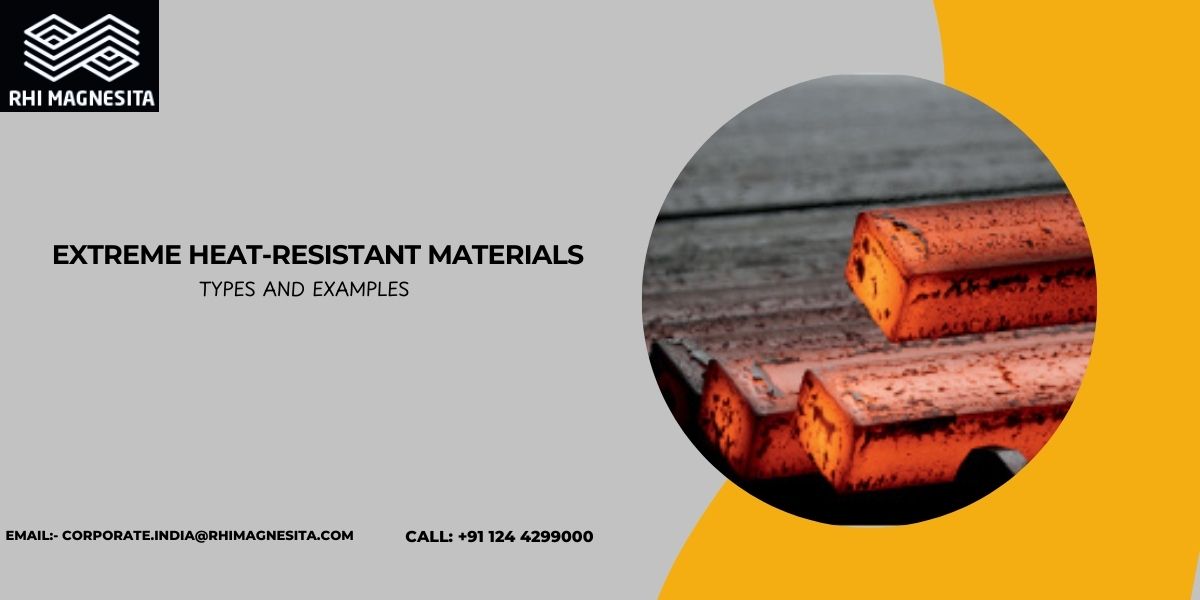
In hostile conditions, heat resistant materials are like quiet sentinels—they withstand harsh temperatures without sacrificing their integrity or function. Carefully crafted, these materials maintain their physical and chemical characteristics even under extreme temperatures that would ordinarily cause common compounds to break down. In manufacturing, metallurgy, or aerospace, these tough fighters provide structural stability when others stumble.
Among them, refractories occupy a special position and constitute the very backbone of high-temperature industrial activities. Lining furnaces, kilns, and reactors depends on these specific materials, which provide a barrier between the scorching fire within and the outside world. Their importance is as vital as the core of a furnace; they constantly survive demanding cycles of heating and cooling.
Heat resistant materials provide nothing less than amazing distinguishing characteristics. Having high melting points, they withstand disintegration even in temperatures beyond 1500°C. Furthermore, resistance to thermal shock lets these materials withstand common occurrences in many industrial processes—sudden and significant temperature fluctuations. Wear Resistance helps to improve durability even more by shielding them from chemical corrosion and abrasion, therefore ensuring lifetime and dependability in the most demanding surroundings.
Types of Extreme Heat-Resistant Materials or Refractories
Ceramic-Based Refractories
Using the amazing properties of minerals polished to perfection, ceramic-based refractories are like paragons of durability. These high temperature materials have high hardness and are mechanical stress-free; their thermal insulating qualities protect industrial systems from severe heat, therefore ensuring effective energy retention. Their resistance to corrosion raises their profile even in chemically hostile conditions, therefore protecting mechanisms from the effects of wear and deterioration.
Among the most remarkable examples are Alumina (Al₂O₃), recognized for its great strength and thermal stability; Magnesia (MgO), praised for its outstanding resistance to high temperatures and basic slags; and Zirconia (ZrO₂), valued for its great thermal shock resistance. These ceramic giants line furnaces and ladles in the most demanding environments. These include steel plants where they line furnaces and ladles; glass manufacturing where they endure molten glass; and industrial furnaces, providing persistent dependability at high temperatures.
Carbon-Based High Temperature Materials (Refractories)
Combining high thermal conductivity with chemical inertness, carbon-based refractories represent endurance in the most hostile settings and are very advantageous when heat and chemical processes combine. Their resistance to chemical assault gives them an uncompromising advantage, especially in demanding industrial environments. Their capacity to effectively carry heat ensures the flawless flow of thermal energy.
Graphite, valued for its exceptional thermal performance and lubricating qualities, is the core of this category. Another wonder is carbon bricks, which have great resistance against slag penetration and thermal shock, thus supporting constant operations. These strong high temperature materials are vital for electrodes in electric arc furnaces, where they channel enormous currents, and for blast furnaces, where they resist both searing heat and molten metal, therefore ensuring operational perfection.
Oxide and Non-Oxide Ceramics
Made to withstand severe temperatures while preserving structural integrity, oxide and non-oxide ceramics are paragons of accuracy and durability. Ideal for settings where corrosion and heat combine, oxide ceramics like Silica (SiO₂) and Spinel shine bright in thermal insulation and chemical stability. Conversely, non-oxide ceramics such as Silicon Carbide (SiC) and Boron Nitride (BN) deliver unmatched hardness, great wear resistance, and thermal conductivity.
These amazing heat resistant materials find their place in high-stakes uses. For example, rocket nozzles rely on their capacity to resist extreme heat and friction during liftoff. Likewise, wear-resistant coatings strengthened by these ceramics prolong the lifetime of industrial components. Furnaces depend on them to keep efficiency under searing circumstances without deterioration.
Refractory Metals
Engineering wonders with high melting points and strong corrosion resistance are refractory metals like tungsten and molybdenum. Under continuous heat stress, these metals maintain their strength when other materials would melt or disintegrate. Their chemical durability ensures they stay unharmed even in the presence of strong gasses and molten substances, so they are very essential in modern industries. With the highest melting point among all metals, tungsten excels at the core of jet engines where parts have to resist mechanical stress as well as heat. Space exploration depends much on molybdenum, which strengthens spaceship construction against cosmic extremes. These high resistant materials also enable high-temperature reactors, therefore ensuring stability and performance under strong heat loads.
Polymer-Based Heat Resistant Materials
Perfect mix of lightweight design and thermal insulation, polymer-based heat resistant materials shine bright in applications where both agility and endurance are most important. Essential in aerospace and electronics, polyimides (Kapton) have the amazing capacity to resist high temperatures. Known for its non-stick qualities and durability, PTFE (Teflon) provides unparalleled dependability in heat-resistant coatings. Through insulation in electronics, these flexible polymers protect delicate components, ensure performance under heat stress, and strengthen coatings subjected to demanding conditions.
Concluding Remarks
Unsung heroes of contemporary industry, refractories and heat temperature materials ensure flawless operations under the toughest circumstances. From lining blast furnaces to supporting space missions, their unparalleled resilience at huge heat is vital for advancement. The need for these strong materials is fast growing as space exploration soars to new heights, green energy technologies advance, and manufacturing processes become more demanding. The future resonates with many opportunities; advancements in heat temperature materials will open doors and enable industries to overcome the most hostile circumstances and redefine the boundaries of human capability.